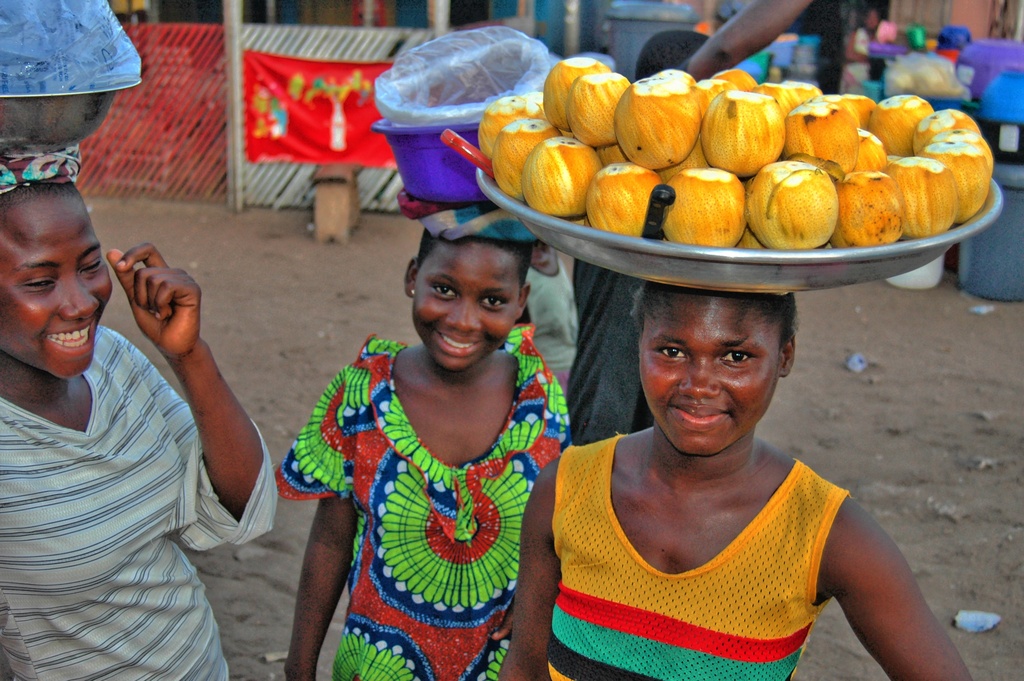Fofie: The Sacred Harvest of Yams
and the Spirit of Gratitude in Nchiraa
In the quiet hills of Nchiraa, near Wenchi in Ghana’s Bono Region, there is a season when the earth speaks through abundance — and the people respond with reverence. It is a time of full barns, open arms, and sacred thanksgiving. Not just for food, but for the favor of the ancestors, the patience of the farmers, and the heartbeat of the land.
This is Fofie — the Yam Festival of the people of Nchiraa. Celebrated each October, Fofie is more than a harvest ritual. It is a spiritual celebration that connects the past with the present, the farmer with the earth, and the community with its roots.
More Than a Festival — A Ritual of First Fruits
In Nchiraa tradition, yams are not just crops — they are sacred gifts. They represent life, survival, and prosperity. And they must never be eaten until the gods and ancestors have been honored.
Fofie is the moment of offering. The community gathers not to consume first — but to give.
“We thank before we taste.
We offer before we enjoy.”
This spirit of reverence transforms Fofie from a simple harvest festival into a sacred rite of passage for the season.
Sacred Rites and Ceremonies of Gratitude
Fofie unfolds with a rhythm shaped by ritual, reverence, and joy:
Ancestral Offerings at the Shrine
Before the first yam is touched by any household, it must first be presented at the ancestral shrine. Elders and priests lead libation ceremonies, offering the first harvest to the spirits who protected the land and the laborers.
Ritual Cooking of the First Yam
Special yams are selected, peeled, and boiled in a communal pot — not just for eating, but for ritual tasting. The elders are served first, symbolizing the link between generations and the continuity of tradition.
Public Gathering and Yam Feasting
After the rituals, the community comes together to share meals made from the new yams — boiled, mashed, roasted, or pounded into fufu. It is a celebration of nourishment, hard work, and divine favor.
Drumming, Dancing, and Cultural Displays
Though quieter than larger festivals, Fofie bursts with dance and music. Traditional drums echo across the hills, youth perform cultural dances, and praise songs are sung in honor of the land, the gods, and the ancestors.
Reflection and Renewal
Fofie is also a moment for elders to share wisdom, stories, and guidance with the younger generation. Farming lessons, moral teachings, and clan history are woven into the day’s activities — ensuring that harvest is not just of crops, but of knowledge.
Fofie and the Discipline of Gratitude
At its core, Fofie teaches that every gift — especially from the earth — must be met with humility and thanks. It affirms:
That gratitude must come before gain
That tradition safeguards what time might forget
That community thrives where culture is honored
Fofie is not just about what was grown — it is about how we receive it.
A Quiet Festival with a Deep Root
Though Fofie may not carry the grandeur of some national festivals, its strength lies in its quiet depth. It is observed consistently, year after year, by the people of Nchiraa — whether the rains were kind or difficult, whether the yields were plenty or meager.
In a fast-moving world, Fofie reminds a people to pause — to thank the land, honor the ancestors, and acknowledge the unseen hands that made the harvest possible.
A Local Tradition with Universal Meaning
For the people of Nchiraa, Fofie is a reminder of who they are and what sustains them. It reconnects them to the land and to each other.
It is a message carved in yam and prayer:
We plant in hope.
We harvest in humility.
We celebrate in unity.
Come Witness a Festival of Sacred Simplicity
To witness Fofie is to witness sincerity. You won’t find flashy costumes or loud displays — but you’ll feel the soul of a people deeply connected to their land and their values.
Fofie is not just a festival.
It is a thanksgiving.
A seasonal prayer offered with open hearts and open hands.
Fofie and the Power of Culture
What makes Fofie special is not its scale — but its soul. It reminds us:
That the earth must be thanked before it is taken from again
That tradition is kept alive through ritual, not routine
That simplicity, when sacred, becomes profound
In every yam shared, every libation poured, and every drumbeat heard in Nchiraa, Fofie affirms that culture is not a performance — it is a prayer.
Ready to experience it for yourself?
Start planning your cultural journey into the soul of Ghana.
Other websites - Not shown within our main site-map:
- Fort Teshie (Fort Augustaborg) - Teshie, Accra)
- Fort Komenda - 2 Forts at Komenda (Central Region, near Elmina and Cape Coast, Central Region)
- Forth Conraadsborg (Elmina, Central Region)
- Fort Ussher (Accra, Ussher Town)
- Fort Wiliam (Cape Coast, Central Region)
- Fort Victoria (Cape Coast, Central Region)
- Fort Batenstein (Butree, Western Region)
- Fort Patience (Central Region)
- Kwame Nkrumah Memorial Park and Museum (Accra)
- Yaa Asantewaah Museum (Ashanti Region)
- The W .E. B. Du Bois Centre for Pan African Culture (Accra)
- Volta Regional Museum, Ho (Volta Region)
- Kakum National Park (Central Region, near Cape Coast)
- Aburi & Aburi Botanical Gardens (Aburi, Eastern region)
- Kwame Nkrumah Mausoleum Nkroful (Western Region, Nkroful)
- Official website of Tetthe Quarshie Art market (Accra)
Search Ghana Flights Info

3 girls selling fruits and food at the road side. (c) Strictly by Remo Kurka (photography)